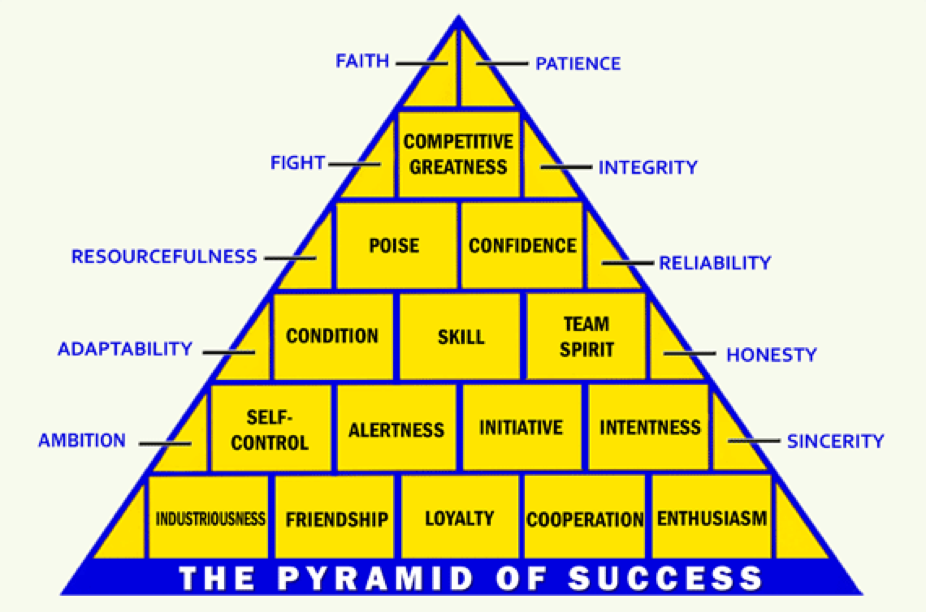College basketball is already in full swing, and conversations about March Madness (the NCAA men’s basketball tournament) abound. Every year at tournament time, bracket sheets are filled out, money is involved, and even people who aren’t real fans find themselves following the games—hence the moniker March Madness.
John Wooden, UCLA’s legendary basketball coach and winner of 10 national championships, is revered as the gold standard of college basketball coaches—but he was also known as a philosopher-coach. In that light, when asked about his success, Coach Wooden would be quick to reference his sophomore high school math teacher, Lawrence Scheidler, who instructed his class to write a paper defining success. “Mr. Scheidler wanted to get us thinking about the concept of success and whether it just meant getting rich or famous or beating somebody in a ball game.”
After decades of thinking about Mr. Scheidler’s assignment, Coach Wooden’s the Pyramid of Success was born. Most basketball enthusiasts have heard of this pyramid; many of you have probably listened to a motivational speaker delivering an inspirational keynote on it. Yet, how many financial advisors do you think have incorporated the teachings of Coach Wooden into their business? My instinctive response is “not many.”
A few years ago, I had the privilege of facilitating a retreat for one of the top wealth management teams in the industry (averaging $300 million of new assets annually). The homework assignment for every team member (prework for the retreat) was to outline and explain each of the pyramid’s components, then read a short Wooden biography. They were also assigned one or two components to discuss at the retreat.
Upon reflection, I think I got equally as much, if not more, from facilitating this discussion than the high-powered team did. And they were all fully on board; they had read the book and written out their thoughts to the extent that I found myself facilitating serious philosophical/performance discussions throughout the entire day.
My challenge to you, if you dare to accept, is to undertake a similar exercise. Read a book either on or by this icon with your team (Wooden: A Lifetime of Observations and Reflections On and Off the Court by John Wooden with Steve Jamison is a good and easy read) and have everyone be prepared to discuss each of the pyramid’s components.

If you accept my dare and engage in this exercise, I’d suggest taking a month (and four team meetings) to work on incorporating Wooden’s winning philosophy into your team. Here’s what they may look like:
Week 1: You will want to begin at the base, the pyramid’s foundation, and assess your team’s current status on a 1-5 scale (5 being excellent) on each of the five components: industriousness, friendship, loyalty, cooperation and enthusiasm. Each component should receive an honest assessment and a course of action for improvement that’s agreed upon by the entire team.
Week 2: Review progress and perform the same exercise for: self-control, alertness, initiative and intentness.
Week 3: Review progress and perform the same exercise for: condition, skill and team spirit.
Week 4: Review progress of incorporating the philosophy of the entire Pyramid of Success to date. Discuss what’s improved and what areas might need more attention. End the meeting by performing the same exercise for competitive greatness.
As you’ve probably already concluded, this is a lot of work. It requires strong leadership and a commitment to excellence. It’s no coincidence that the elite team referenced earlier both took this exercise seriously (everybody learned a lot) and experienced growth year after year.
One of the keys to becoming an elite advisor is to model what they do. The choice is yours, but from the perspective of a performance coach—go for it!
Matt Oechsli is author of How to Build a 21st Century Financial Practice: Attracting, Servicing, and Retaining Affluent Clients. www.oechsli.com





